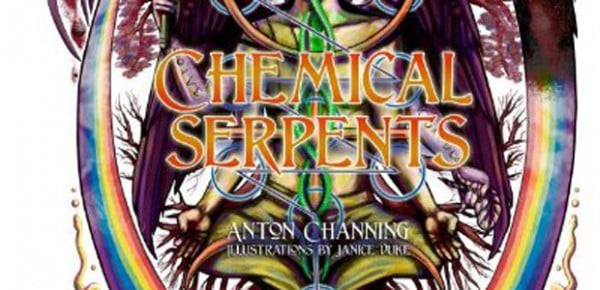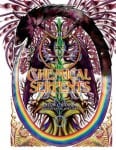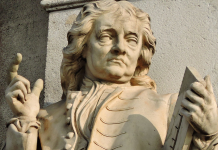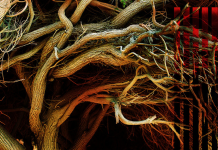
 Chemical Serpents: The Symbols of Illumination, by Anton Channing, illustrations by Janice Duke
Chemical Serpents: The Symbols of Illumination, by Anton Channing, illustrations by Janice Duke
When Illuminated Press, 978-1-909279-01-8, 100 pp. (incl. appendix, bibliography), 2013, Silver First Edition
I started falling in love with this book as it came out of the packaging. It’s tight, and has good, heavy cover stock and glossy high-quality pages. The cover art (an interpretation of Baphomet within an ouroboros) is a feast for the eyes and mind. The notebook-sized format, 8.5 x 11″, gives plenty of room for the text and lavish illustrations throughout its 100 pages. The print is done with accent colours, which takes a little acclimatization, rather like one’s first time playing poker with four-colour cards, but then the effect is pleasing.
The plan of the book is Pythagorean, in the sense that it starts with serpent symbolism, including the ouroboros, as the one, moves into egg-and-serpent and other generative symbols for the dyad, then has sections on the trinity, the four elements of the manifest world, then the pentagram, hexagram, and heptagram in the section on the microcosm and macrocosm before synthesizing in the long chapter on world trees, and ending in a Gnostic lecture on illumination.
While Channing works from a chaos magic tradition (note how that’s not an oxymoron any more), he is clearly well-versed in Hermetic symbolism and ancient mythology. When he covers topics I know well, like the mythos of the Ancient Near East, he does not falter or overextend himself. Chemical Serpents is basically a guided tour of certain significant archetypes. It is not quite encyclopedic, nor is it a how-to; it is for background reading, and for a spur to further investigation.
Some careful readers, and most nerds, are likely to notice two mistakes. He errs in a discussion of Greek ideas, referring to Plato as Aristotle’s student,1 when the point being made makes better sense once this is corrected.2 And, n a discussion on the nature of the pentagram, he succumbs to the temptation to give an algebraic definition of φ, the Golden Ratio.3 However, his equation, x+y/x = x/y, (where x>y) needs to be written as (x+y)/x = x/y, for x > y > 0, and it is not made completely clear that what one solves for is φ = x/y (set y = 1, then take the positive root of the resulting quadratic equation in x).
Copy-editing became slightly spotty in the second half of the book (about one spelling glitch every two or three pages, versus essentially none in the first 50). In my experience, this will not put off many readers, but it had to be mentioned.
Not long before starting to write this review, I was reminded of a saying by Alexandra K Trenfor (probable pseudonym), “The best teachers are those who show you where to look, but don’t tell you what to see.” Chemical Serpents follows the spirit of that idea by giving insights into a very wide range of related symbols, without going into a great deal of instruction about what to do with them.
The text flows very well, and sometimes the topics meander a bit, but I like that in an esoteric book. I personally found the material on the history of metals a useful alloy for the discussion of their place in alchemy, in the same way that knowing the historical context of philosophers aids in understanding their work.
There’s an appendix of “Asides,” with interesting snippets of information that didn’t quite fit into the main current, and a delightfully off-centre bibliography, where the author seems to have made an effort to supplement the standard texts, not just list them. The lack of an index will probably not be felt strongly in such a short, well-organized book.
The illustrations are outstanding. Perhaps a quarter of the total illustrations are reprints of traditional alchemical emblems, or diagrams from Eliphas Lévi (who is left out of the bibliography despite his obvious influence on the text). The rest are originals by Janice Duke: the cover, seven full-page chapter frontispieces, and dozens of smaller illustrations throughout. They are lush, esoterically intelligent, and full of beguiling details. Spoiler: she loves gold.
Here’s what I wonder: why, despite all the obvious virtues of this book, is it not better known? Channing’s first book, Kaos Hieroglyphica, was enthusiastically blurbed by Peter J Carroll. This book would not be out of place in any esoteric library.








